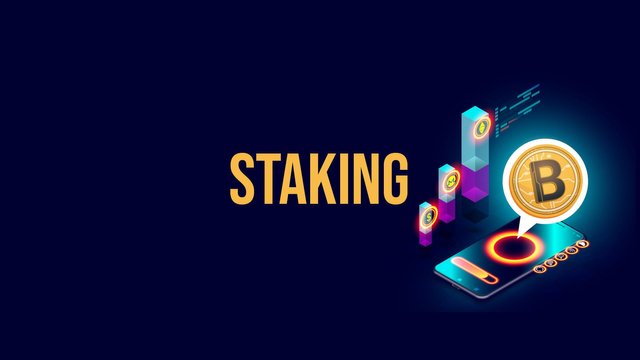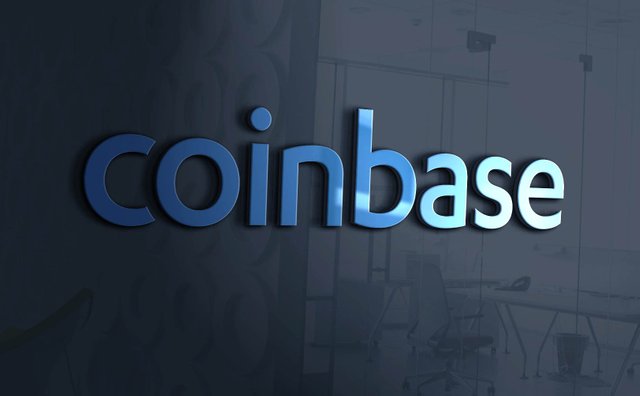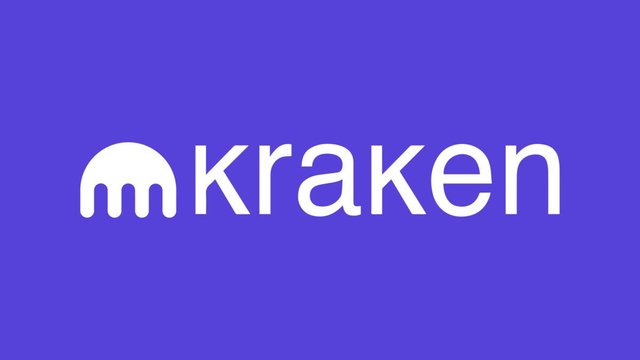[ SEASON 3 | Week 1 ] Steemit Crypto Academy Homework Post for @imagen | Staking |
Hello friends .... !!!
Meet again with me Ichsan Angga P on this Steemit Crypto Academy Homework Season 3 Week 1.
Today I will finish my homework About Staking given by professor @imagen
What is Staking ?
Staking is a process when you actively participate in the validation of transactions in the Proof of Stake (PoS) algorithm consensus blockchain.
Staking is where the process of a user taking part in participation to validate transactions that occur on the Blockchain, where our assets are held or buried in order to get a payment or reward for us. Staking usually works on a consensus Proof of Stake (PoS) algorithm, which is a method to generate passive income for the owner of the asset.
So in this staking you need to hold your assets for a long period of time, but it also depends on the platform where you want to stake, because each platform is different. In this staking to calculate the payment from our staking results the assets we have are not certain, according to the assets we are staking and also the rate of inflation that affects your staking fee.
There are many platforms that currently provide staking, such as Binance, Coinbase, Kucoin, Kraken, Poliniex and many other platforms, on this occasion I will only take 2 platforms to discuss, namely Staking on Coinbase and Staking on Kraken.
Coinbase
Coinbase is a platform provided to carry out transaction activities on cryptocurrency digital assets, on this platform you can make transactions both exchange and trade them, like most other platforms here there are digital assets such as Bitcoin, Ethereum, Bitcoin Cash, Litecoin and others.
On this coinbase platform, they also succeeded in creating Staking in 2011, here you can do staking activities on the assets you have, the more you put coins for staking, the bigger the payment you get. But you should also look at the payouts for each coin wagered, so before starting you should look and choose which coin you think is a good bet to bet on.
Kraken
Kraken is a platform that also provides a place of exchange and a place of activity to transact your digital assets, which is based in the city of San Francisco, Kraken is also included in the ranks of platforms that are in great demand by people in the world.
At Kraken he has also created a Staking system in 2011 which means that on this platform, those of you who use Kraken can do Staking activities to get paid or passive income every day, according to the number of assets you stake, then you will get a percent payment of your assets.
How does Staking work
So actually how staking works is very easy to understand, where this staking requires you to participate in a Proof of Stake (PoS) network on assets that are allowed for staking. So this helps the network to be more secure and work more efficiently, from you staking on the network you will be rewarded in the form of assets that you stake from the network.
So the assets that you stake or store, it is a guarantee that you are really someone who wants to participate in building the network to make it safer and also work more efficiently, so when you are someone who can be said to have intentions evil, then there is a guarantee that your staked assets will be held as collateral.
Difference Staking on Coinbase and Kraken
Coinbase
.png)
As you can see On the Coinbase platform, they provide several coins that can be staking, and have a payout with the percentage as above, on Staking Ethereum (ETH) it gets 5% APR, for Staking Cosmos (ATOM) it also gets 5% APY, and for staking Tezos (XTZ) it gets 4.63% APY.
On the Coinbase platform, the cost of staking is quite large, namely the Staking Fees that must be redeemed, namely: 20% – 25%, very high, not the costs that must be incurred for staking on this platform.
Kraken
.png)
.png)
As you can see On the Kraken platform, they provide several coins that can be staked, and have a payout with the percentage as above, which is given annually, on Polkadot (DOT) 12% , for Kusama (KSM) also 12% , Cardano (ADA) 4%-6%, Flow (FLOW) 4%-6%, Ethereum (ETH) 5%-7%, Cosmos (ATOM) 7%, Tezos (XTZ) 5.5%, Kava (KAVA0 20% , Euro (EUR) 1.5%, US Dollar (USD) 2%, and Bitcoin (BTC) with a reward of 0.25%.
On the Kraken platform, the cost of staking can be said to be cheaper than the Coinbase platform, namely Staking Fees that must be redeemed, namely: 15% - 20% only, can save about 5% to 10% of the staking fees owned by the Coinbase platform.
Which is More Profitable??
So in my opinion, from the point of view of the advantages between the Coinbase platform and the Kraken platform, I prefer Kraken, because we can see from the point of view that the rewards given to the Coinbase platform have a smaller percentage than the rewards on the Kraken platform, if on Coinbase the rewards are for staking. Cosmos (ATOM) coins are only 5%, while on the Kraken staking platform Cosmos (ATOM) coins are given a reward of 7%.
And not only in terms of rewards that make the Kraken Platform more profitable than the Coinbase platform, but also in terms of cheaper staking fees, if on Coinbase the staking fees are 25%, while on the Kraken platform they provide cheaper Staking Fees. which is between 15% -20%, so the Kraken platform is more profitable for sure.
What is Impermanent Loss ?
So the non-permanent loss is a temporary loss, which if we understand this Improper Loss is very different from the loss in general, which is that this loss is only temporary, but will continue to be an impermanent loss as long as the asset holder does not sell the asset. assets that they own, which means that this non-permanent loss still has a chance to become a profit in the future.
These non-permanent losses occur usually as a result of volatility movements that occur in the cryptocurrency trading market. If the volatility that occurs is large and numerous, the greater this non-permanent loss will occur, so the volatility and non-permanent loss can be said to be interrelated.
What is Delegated Proof of Stake (DPos) ?
Delegated Proof of Stake (DPos) is a Consensus mechanism that was successfully created by Daniel Larimer in 2014, the Blockchain that uses DPoS conducts a vote which later the results of this vote will be determined by delegates who can secure the network on their behalf. So this delegate has a big responsibility to reach consensus in the creation process as well as validation work on new blocks.
So the algorithm mechanism used in DPoS is pretty cool, and really reflects a democracy that exists in the digital world, where in DPoS they vote on the reputation of a delegate. So if one of the selected and appointed nodes makes an error and has inefficient performance, then it is certain that the node will be immediately replaced with another node that has more efficient performance.
How Delegated Proof of Stake (DPos) Work ?
So as I explained above that the way DPos work is where the delegates are given a responsibility that requires them to ensure the nodes they create run properly and efficiently, as well as collect every transaction and build it into a block that can validate every transaction. transactions, and also they have the task of addressing the consensus issues that occur on the network.
In the DPos working system, all token holders in the network can access the voting that occurs for delegates in the network, where the power of this vote is judged by the number of coins you have, the more the higher the voting power. . and even better, someone with great voting power can delegate their vote to another user on behalf of the delegate's name.
At DPos they also give criticism or threats regarding your income which may be lost if a delegate has a bad nature and cannot maintain security on the network, then your income will automatically be removed. If the network judges that a delegate is no longer feasible, then he or she will be replaced by someone else who has better performance.
In the running DPos system they limit the permission to validate transaction blocks, this is very good when viewed from the level of performance effectiveness and also in terms of the level of efficiency because it only takes a few people to work on solving in order to reach the desired consensus point in network, so he will be able to work optimally and efficiently to do his job.
CONCLUSION
So we have come to the conclusion, let's see one by one the conclusions we can draw from the tasks we have completed, namely:
Staking
Staking is a way of working where here you will get paid for your efforts that have held or risked your assets, then you will automatically get rewarded for your efforts that are involved in helping to secure the network, the reward is in the form of coins where you staking coins .
Impermanent Loss
So, this non-permanent loss is a loss that is not fixed or a loss that still has the opportunity to become a profit in the future, with a note that there the price drops you don't sell it, if you sell it then this will be a loss that generally happens.
Delegated Proof of Stake (DPos)
DPoS is a performance system that has a unique way of getting the desired level of consensus, which is the most important thing to pay attention to in Cryptocurrency networks. If consensus has been reached then the network will run safely in the cryptocurrency network.
Last word
That's the task that I have completed from professor @imagen regarding Staking In completing my assignment, I realize that there are still many meanings that are far from perfect, therefore I apologize to friends if there are still many mistakes, and hopefully friends will be happy to give good suggestions or input on my posts.
Thank you all, I hope this post can help you all to understand more about Staking.



Hi @ichsananggap. Thank you for participating in Steemit Crypto Academy Season 3.
I congratulate you, you did a great job and demonstrate mastery of the topics requested in the assignment, and you don't have to apologize for the mistakes you may have made.
I look forward to correcting your next assignments.
Grade: 9.0